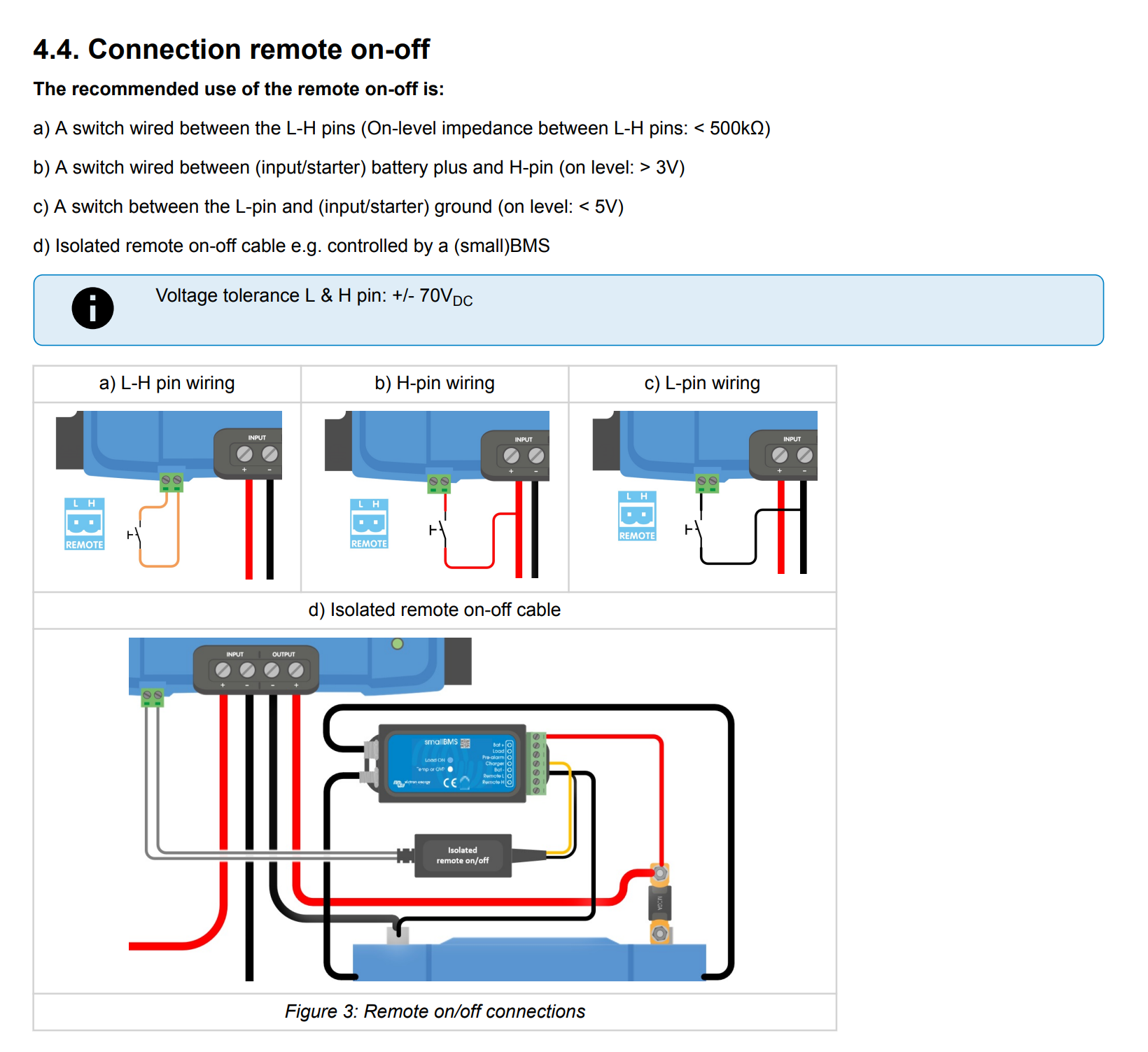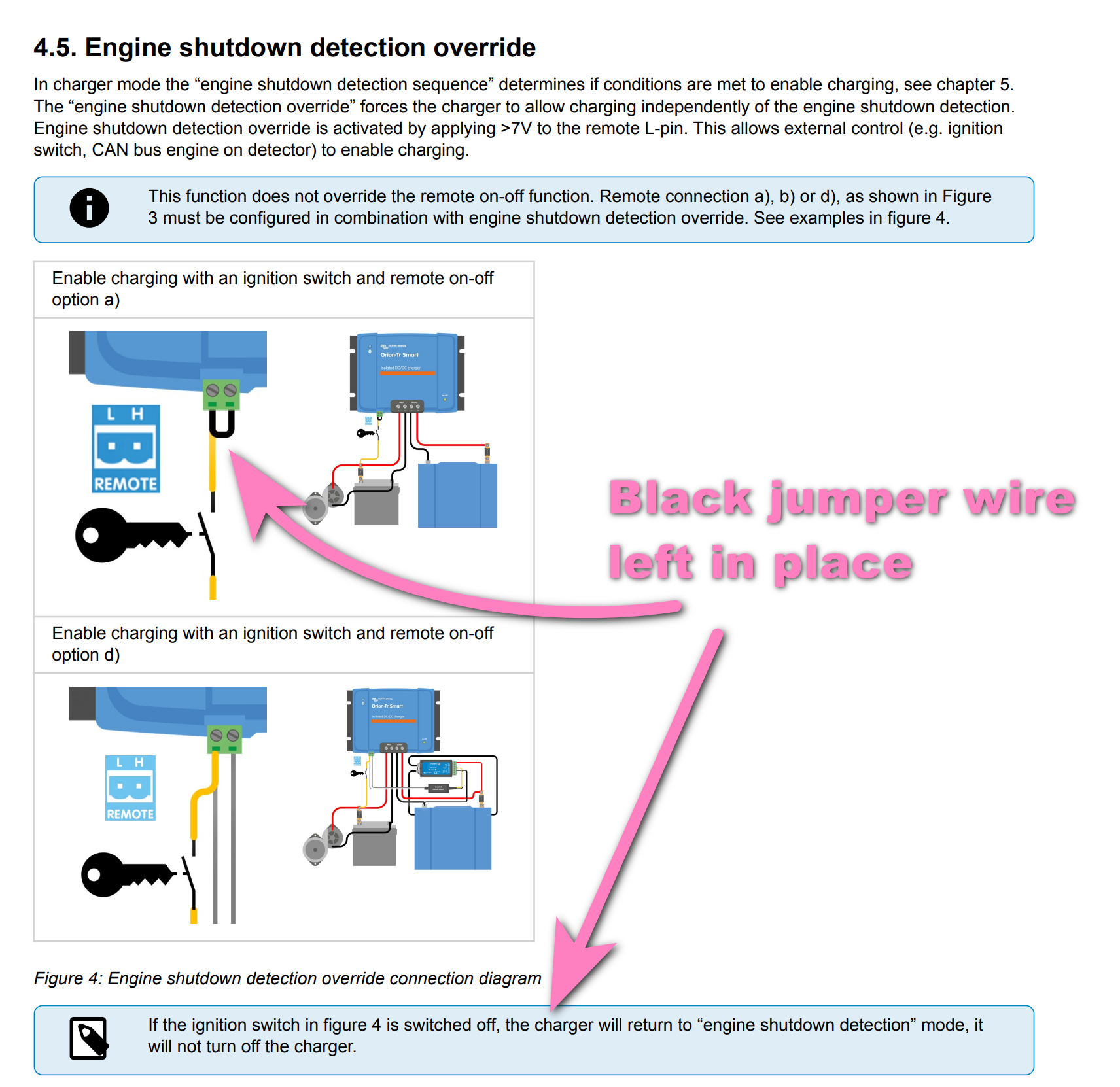Is it possible to use remote on/off control AND engine shutdown logic?
I am using an Orion 18 amp isolated DC-DC charger between my tow vehicle and my travel trailer. I have almost a 2 volt drop in wiring between the TV battery and the Orion. I've done as much as reasonably possible to reduce this voltage drop so it is what it is.
I would like to add a control line from the TV to enable charging of the Orion but would also like to use the engine shutdown logic to control maximum charging current. This is not essential but desirable. I will fall back on remote control only if the two can't be combined. The manual says in order to use remote on/off, engine shutdown control must be disabled.
Anyone know for sure?


